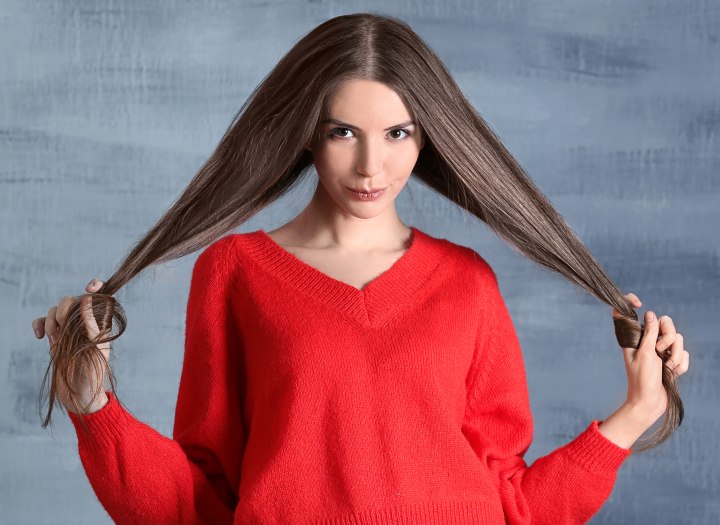Dry Itchy Scalp

A: If you are certain that the itchiness of your scalp is not being caused by some form of eczema - therefore requiring a doctor's care - but is just the by-product of an overly dry environment, there are numerous products on the market - shampoos and conditioners - designed to treat dry scalp.
As to the subject of brushes for long hair, I want to add the following: first, you always want to have a few wide-toothed combs on hand to help you detangle your hair when it is wet. I actually recommend keeping a wide-toothed comb in the shower so that you can use it to evenly distribute your conditioner once you've applied it to the hair. Even the most widely spaced tines on a vented brush put tension on the hair strand in multiple directions at once and can stretch or break wet hair strands, so always use caution.
For actual brushes, I recommend that every woman have at least one round brush (with tines) for blow-dryer styling. The longer the hair is, the larger the round brush should be. Blow-dry styling with the round brush helps create soft, smooth curves in longer hairstyles, as well as lift and direction of the waves in shorter styles.
A woman should also have a vented brush (with tines) which is to say a brush whose base has slots to allow air to pass through so that it can be used for drying the hair. The base can be flat (ideal for those women who are blow-drying the hair straight) or curved, and the size needed depends on the length of the hair.
Finally, I feel that everyone should have at least one natural bristle brush. These brushes are great for working with completely dry hair (only) to massage and stimulate the scalp, which promotes circulation and can help to alleviate dryness issues. You should brush the hair every day in sections, but only as much as is needed to completely smooth out tangles.
Over-brushing the hair can lead to damage, such as split ends and breakage. Forget anything you were ever told about needing to brush the hair a certain number of strokes per night. It is completely false. All brushing is intended to do is stimulate the scalp and distribute the natural oils of the hair - apart from styling/grooming.
On the subject of how often to have the hair trimmed to keep the ends healthy, the answer is not simple. It is a matter of the condition of the hair in question. Many stylists will recommend that you get your hair trimmed every 6 weeks to keep the ends healthy. This is fine if your hair is prone to split ends. I, personally, suggest trims for long-haired clients every 8-12 weeks, unless I know they are hard on their hair (over-brushing, heavy blow-dryer or heat appliance styling).
Just make sure to look at your hair every day and examine the ends for splits and signs of damage. If the ends of your hair start to look a little frayed, then you should have them trimmed. Just make sure you have a stylist who understands how much or how little you want to have removed, so that you can avoid the upset of finding the last two months worth of hair growth on the salon floor.
©Hairfinder.com
See also:
Scalp problems
The best types of hair brushes
How to avoid and get rid of split ends